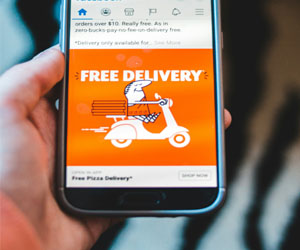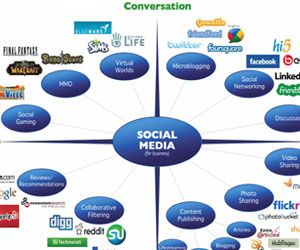


Transforming Work And The Workforce

The gig economy, often characterized by temporary or freelance work, has become a defining feature of the modern labor market. It's a departure from the traditional 9-to-5 job, and its impact on work and the workforce is both profound and complex. In this article, we'll explore the gig economy's impact on various aspects of the labor market, the economy, and the lives of those who participate.
1. Flexibility And Autonomy: One of the gig economy's most significant impacts is the flexibility it provides to workers. It allows individuals to choose when and where they work, which is particularly appealing to those seeking a better work-life balance. Gig workers often enjoy greater autonomy and control over their schedules, making it easier to accommodate personal responsibilities.
2. Economic Growth And Innovation: The gig economy contributes to economic growth by enabling businesses to access a more flexible workforce. This can lead to cost savings, increased agility, and the ability to scale up or down as needed. Startups and small businesses, in particular, benefit from the ability to hire on a project-by-project basis, thereby reducing overhead costs.
3. Job Opportunities And Market Access: The gig economy has expanded job opportunities, allowing individuals with specialized skills to access a global marketplace. Freelancers can work with clients from around the world, increasing the demand for their expertise and broadening their professional horizons.
4. Income Diversification: Many gig workers use freelance and contract work as a means of income diversification. They may hold traditional jobs while taking on side gigs to supplement their income. This approach can provide financial stability and reduce the risks associated with relying solely on one source of income.
5. Challenges For Job Security: While the gig economy offers flexibility, it can also be precarious for many. Gig workers often lack the job security, benefits, and protections afforded to traditional employees. They may face unpredictable income streams and a lack of access to healthcare, retirement plans, and paid time off.
6. Regulatory And Legal Issues: The gig economy's impact is not without controversy. Debates about employment status and legal protections for gig workers have emerged. Governments and regulatory bodies are grappling with how to classify gig workers and ensure they have the necessary labor protections.
7. Work-Life Balance And Well-Being: The gig economy's impact on work-life balance can be both positive and negative. On one hand, it provides the flexibility to create a more balanced lifestyle. On the other hand, it can lead to blurred boundaries between work and personal life, as gig workers may feel the need to be constantly available to secure projects and clients.
8. The Evolution Of Traditional Employment: The gig economy is reshaping the landscape of traditional employment. Companies are adapting to the gig model by offering more flexible work arrangements and considering remote work and project-based roles to attract and retain talent.
The gig economy's impact is multifaceted, reflecting a complex interplay of benefits and challenges. It has revolutionized work and allowed individuals to craft their own career paths, offering autonomy and economic opportunities. However, it also brings issues of job security, regulation, and the need for a safety net for gig workers. As the gig economy continues to evolve, society and policymakers will need to address these challenges and explore innovative solutions to ensure that the positive impact of the gig economy is maximized while minimizing its negative consequences.
 3. Bundle And Upsell: Bundle offers and upselling are effective strategies to increase the average transaction value. By combining related products or services into packages or suggesting upgrades, businesses can enhance the overall customer experience and boost revenue.
3. Bundle And Upsell: Bundle offers and upselling are effective strategies to increase the average transaction value. By combining related products or services into packages or suggesting upgrades, businesses can enhance the overall customer experience and boost revenue.
4. Personalization For Targeted Offers: Personalized offers cater to the individual preferences and behaviors of customers. By leveraging data and customer insights, businesses can deliver tailored offers that resonate with specific segments of their audience, increasing conversion rates and customer satisfaction.
5. Loyalty Programs: Loyalty programs offer incentives to repeat customers. By rewarding loyal patrons with discounts, exclusive access, or points-based rewards, businesses can encourage customer retention and repeat business.
6. Limited-Time Promotions: Creating a sense of urgency is a compelling strategy. Limited-time offers, flash sales, and time-bound discounts prompt customers to act quickly. The fear of missing out (FOMO) can be a potent motivator in a competitive market.
7. Referral And Affiliate Programs: Word-of-mouth marketing is powerful. Offer referral and affiliate programs that incentivize customers and partners to promote your products or services. This not only expands your reach but also builds trust through recommendations.
8. Customer Experience Enhancement: Offer strategies can also extend to the overall customer experience. Providing exceptional customer service, hassle-free returns, and speedy shipping can be differentiating factors that set your business apart.
The Evolution Of Work Environments
 The Shift To Remote Work: The advent of digital technology and high-speed internet connectivity brought about a monumental shift in work environments. Remote work, or telecommuting, became a viable option for many industries. This transition allowed employees to work from the comfort of their homes, reducing commute times and providing a degree of flexibility previously unheard of. Remote work gained further traction during the COVID-19 pandemic when organizations around the world had to adapt to lockdowns and social distancing measures.
The Shift To Remote Work: The advent of digital technology and high-speed internet connectivity brought about a monumental shift in work environments. Remote work, or telecommuting, became a viable option for many industries. This transition allowed employees to work from the comfort of their homes, reducing commute times and providing a degree of flexibility previously unheard of. Remote work gained further traction during the COVID-19 pandemic when organizations around the world had to adapt to lockdowns and social distancing measures.
Coworking Spaces And Flexible Offices: Coworking spaces emerged as a response to the desire for a balance between the structure of traditional offices and the autonomy of remote work. These shared workspaces offer individuals and organizations a more flexible, communal, and cost-effective alternative. They provide a sense of community, access to amenities, and an environment conducive to productivity.
Flexible office solutions have also become popular, allowing businesses to rent office space on a short-term basis, scaling up or down as needed. This flexibility is particularly attractive to startups, small businesses, and companies looking to reduce overhead costs.
Hybrid Work Models: Many organizations have embraced hybrid work models, which combine remote work and in-office work. Employees have the option to choose where and how they work, depending on their tasks and preferences. This approach promotes a better work-life balance and increased job satisfaction, while also reducing the environmental impact of daily commuting.
A Leap Into The Future Of Marketing
 The Need For Innovation In Advertising
The Need For Innovation In Advertising
The modern consumer is bombarded with a constant stream of advertisements, and the challenge for brands is to stand out and make a lasting impression. Innovative advertising approaches have emerged as the answer to this dilemma. They go beyond traditional tactics to capture the imagination and emotions of consumers, creating a more memorable and engaging brand experience.
1. Storytelling Advertising
Storytelling has become a powerful tool in advertising, enabling brands to connect with their audience on a deeper, emotional level. Rather than merely promoting products or services, storytelling advertising focuses on crafting narratives that resonate with the audience's values, aspirations, and emotions. Successful examples include Nike's "Just Do It" campaign, which celebrates personal achievement, and Apple's iconic product launches that build a narrative around innovation.
2. Experiential Marketing
Experiential marketing immerses consumers in brand experiences. This approach brings products and services to life through interactive and memorable events. For example, Airbnb's "Night At" campaigns allow customers to spend a night in unique and exotic accommodations, offering a real-life experience of the platform's value proposition.
 Search Engine Optimization (SEO): SEO is the cornerstone of any successful online marketing strategy. It involves optimizing your website and content to rank higher in search engine results. By using relevant keywords, high-quality content, and optimizing technical aspects of your site, you can improve your website's visibility and attract organic traffic. SEO is a long-term strategy that, when executed effectively, can establish your brand as an authority in your industry.
Search Engine Optimization (SEO): SEO is the cornerstone of any successful online marketing strategy. It involves optimizing your website and content to rank higher in search engine results. By using relevant keywords, high-quality content, and optimizing technical aspects of your site, you can improve your website's visibility and attract organic traffic. SEO is a long-term strategy that, when executed effectively, can establish your brand as an authority in your industry.
Content Marketing: Content is king in the world of internet marketing. Creating valuable, informative, and engaging content is essential for attracting and retaining an online audience. Blog posts, articles, videos, infographics, and more can showcase your expertise and provide real value to your target audience.
Social Media Marketing: Social media platforms offer an excellent opportunity to connect with your audience on a more personal level. Establish a presence on platforms like Facebook, Twitter, Instagram, and LinkedIn, and use them to share your content, engage with your followers, and build a loyal community. Social media marketing can help you humanize your brand and create meaningful relationships with your customers.
Email Marketing: Don't underestimate the power of email marketing. It's a direct way to reach your audience with personalized messages and offers.
 Hyper-Personalization And Targeting
Hyper-Personalization And Targeting
One of the key aspects that make mobile marketing so potent is its ability to deliver highly personalized content. With data-driven insights and user analytics, businesses can tailor their marketing efforts to meet the specific needs and preferences of individual consumers. This personalized approach not only enhances the user experience but also significantly increases the chances of conversion.
Location-Based Marketing
Mobile marketing leverages the power of location-based services to deliver relevant content and offers to users in real-time. For instance, a user walking past a coffee shop might receive a notification for a special discount or offer. This location-based marketing not only increases foot traffic to physical stores but also drives sales in a targeted and efficient manner.
Multi-Channel Engagement
Mobile marketing doesn't confine itself to a single channel. It encompasses various strategies, including SMS marketing, mobile apps, social media advertising, email marketing, and mobile-optimized websites. This multi-channel approach allows businesses to connect with consumers wherever they are, creating a seamless and integrated brand experience.
Mobile Commerce And E-Commerce Integration
The rise of mobile commerce, often referred to as m-commerce, is a testament to the potential of mobile marketing. Consumers can now shop and make transactions through their mobile devices, making it easier for businesses to convert interest into sales. Additionally, mobile apps and mobile-friendly websites have become critical tools for e-commerce companies, streamlining the online shopping experience and boosting conversion rates.
Measuring Success And ROI
Mobile marketing also offers businesses a wealth of data and analytics to measure the success of their campaigns. This data-driven approach provides insights into consumer behavior, click-through rates, conversion rates, and more, allowing businesses to refine their strategies and optimize their return on investment (ROI).